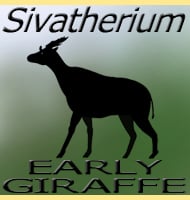Diacodexis
In Depth Diacodexis is an early indicator of the forms that the ungulates (hoofed mammals) evolved from, though Diacodexis may not have been ‘the’ ancestor even though it was certainly related to them. The main clue that Diacodexis is a candidate for being an ancestral form of artiodactyl is that while the feet still have … Read more
